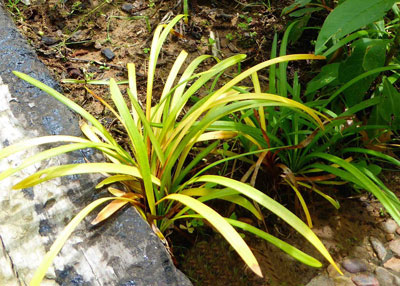Question of the Week – Number 1: September 3, 2020

“My liriope border is dying and it seems to be moving down the row. What can I do?”
This question has actually been called in to my radio programs several times in the past month. All I’ve had has been verbal descriptions and no actual photographs of their examples. But I’ve lived it myself.

Things you’ll need to know…
If your liriope plants are suddenly turning brown, collapsing and rotting (same thing for dwarf mondograss), here are the pertinent facts.
• It’s probably liriope crown rot (Phytophthora palmivora).
• It’s one of the “water mold” funguses we see in soggy conditions.
• Sudden loss of seedlings in seed flats, known as “damping off,” is another disease caused by a species of Phytophthora.
• I’ve seen it most often in my Silvery Sunproof liriope plantings, also in a large bed of dwarf mondograss, but all varieties are susceptible.
• It’s worst in heavy clay soils, particularly during periods of prolonged rain.
• Overhead irrigation, which is almost always going to be how liriope is watered, whether by sprinklers or garden hoses (or by rainfall) is a frequent cause of its spreading.
• I’ve had the best luck removing and replacing soil in an affected area quickly to stop it from spreading. When it hit my planting of dwarf mondo, I repotted as much of the planting as I could into very loose potting soil and grew it for a few months before planting it into a much better-draining location. I changed to another groundcover where the disease had been the problem.
• As you are surmising, fungicides aren’t a great solution to this bothersome disease. Cultural practices are far better.
What a couple of universities say…
Here are posts of a couple of leading southern ag schools. These links may prove to be helpful.
• From Louisiana State University’s Ag Center https://www.lsuagcenter.com/NR/rdonlyres/D78B96B7-896F-4DDD-980D-E7BD2A79C26C/80048/pub3189CrownRotofLiriopeLOWRES.pdf
• From the Florida Department of Agriculture clear back in 1999
https://www.fdacs.gov/content/download/11398/file/pp392.pdf
